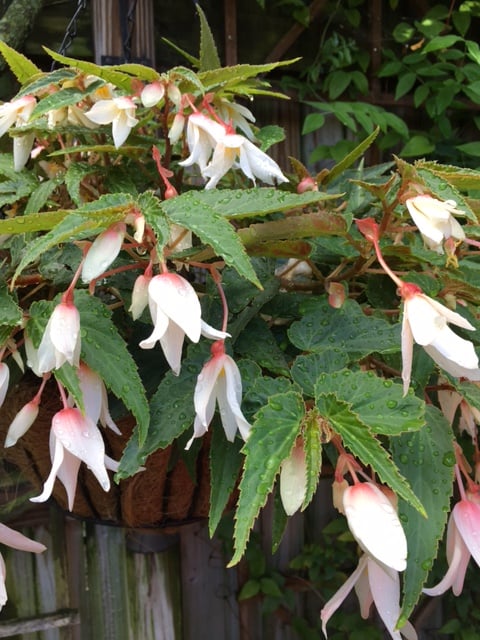
Over the last few years I’ve come to a greater appreciation of begonias, both in conservatories and outside in the garden. Because my main garden is on the north side of a four-story building, I’m always interested in ways to bring colors other than green to the shade.
Like many gardeners, I used to rely on big splotches of impatiens, until the impatiens downy mildew came along and forced me to find other possibilities. I’ve tried many supposedly shade-tolerant annuals since then, but the winners seem to be begonias.
Fortunately, these plants, native to tropical and subtropical parts of Asia, offer a wide array of effects in both leaves and blooms. Over the course of a Chicago summer, my begonias grow vigorously outdoors. I place their pots among my garden plants, where they get dappled light through trees high overhead. In winter, they go indoors.
I saw a lot of begonias in Buffalo, New York, recently, when I toured home gardens with the Garden Writers Association. Many of the gardens were tiny and planted mostly in containers—easy to shelter inside during rugged Buffalo winters.
Wax begonias are the classic little ones you can buy cheap in flats every spring. They seem to thrive in the hot, humid Midwestern summers. I plant wax begonias with coral-colored flowers and dark bronzy leaves in pots flanking the floor door, because I like the way they complement the red-brick color of the building. I don’t bother to overwinter them, because they’re so cheap.
Another group of begonia hybrids called angelwings are larger, with wide, pointy leaves and showy sprays of flowers. There are quite a few varieties, including the Dragon Wing© series, mostly in shades of pink and red. Bolivian mountain begonias, with skinny leaves and dangling, bell-like flowers, are lovely in hanging baskets.
Tuberous begonias often have large, fluffy, almost roselike flowers in a wider range of colors, including lovely yellows and pale pinks. They’re trickier to overwinter; you can’t just move the pots into the greenhouse, because they actually require a period of chilling each year (although not so chilly as a Chicago winter). It’s possible to shake off the soil and overwinter the tubers in a cool, dry place, like dahlia tubers, but that’s too much fuss for me.
Then there are a range of begonias grown mainly for the interest of their leaves. Rex begonia leaves have twirly spiral patterns. Other species have leaves with interesting colors, textures and shapes, some pointy, some oval, some bumpy, some slick. I like to set a pot of begonias with wide, smooth, glossy leaves among the ferns, for contrast.
Indoors, begonias will need steadily moist soil and somewhat humid air, but with good ventilation—exactly what you can supply in a well maintained greenhouse. Over the winter, I also root cuttings of my favorite begonias so I’ll have plenty of options for next summer’s shade garden.


